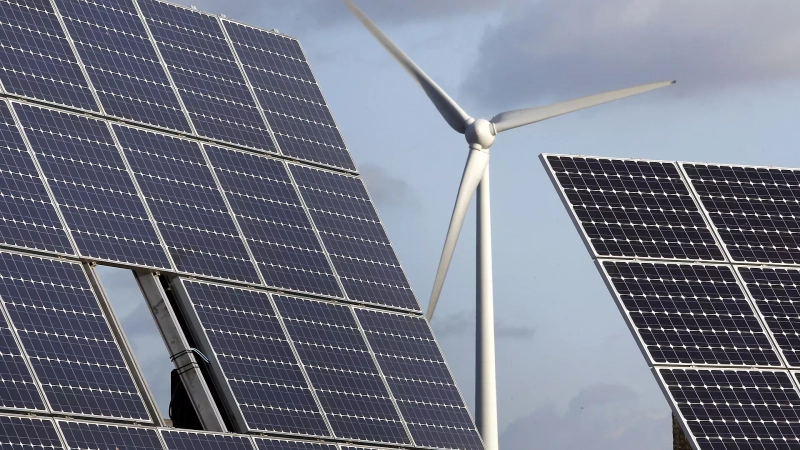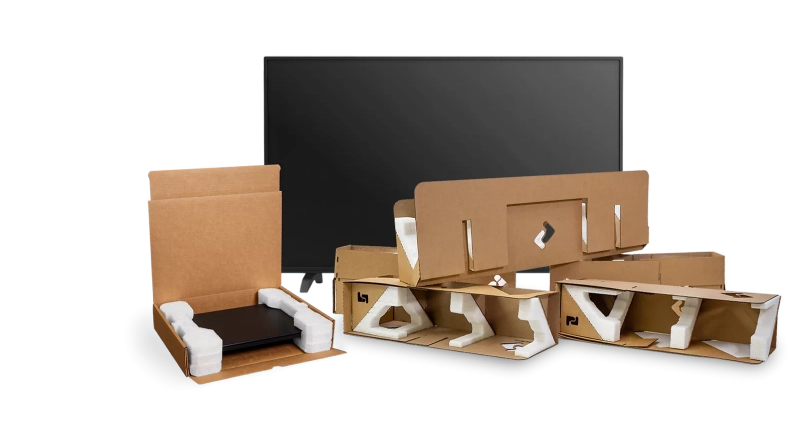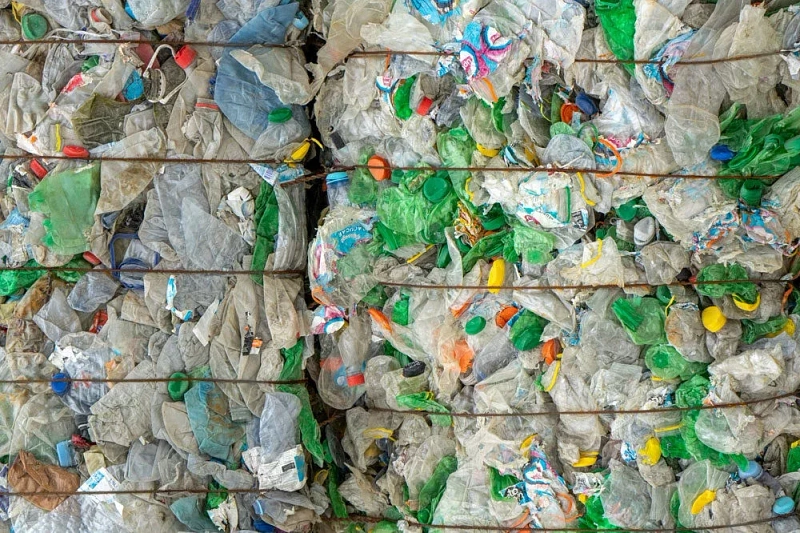Introduction
Approaching the eight-year anniversary of the Paris Agreement, the world’s largest companies are 72% short of reaching global climate targets. During this time, corporates’ environmental CSR initiatives outlaid billions annually on emissions reduction technologies targeting efficiency and renewable energy, but many programs relied on opaque indirect offsetting schemes to support public commitments of climate neutrality, material recovery, and ecosystem restoration. On average, consumer goods companies generate over “80% of GHG emissions and more than 90% of biodiversity and ecosystem resource impact” within their supply chain. Global material circularity rates dropped from 9.1% in 2018 to 7.2% this year, and fragmented supply chains continue to push Earth Overshoot Day earlier.
In summary, emissions reduction strategies face a roadblock, waste is spiraling, and surrounding ecosystems are deeply threatened. A quick back-of-the-envelope calculation shows we cannot plant trees all the way to reach climate targets; the same is true for material recovery and plastic collection credits, as well as biodiversity protection and habitat restoration projects. Multinational businesses perpetuating take-make-waste economies will soon, if not already, recognize the dual penalty of “pay-to-pollute” offsetting, at the cost of value-generating inward investments.
Now, multinational consumer goods companies face their greatest challenge yet, in addressing scope 3 emissions (i.e. supply chain emissions), with supporting measures for material resource management and biodiversity conservation showing follow-on momentum. At the confluence of social and environmental impact leadership, fundamental business economics, and regulatory obligation, Consumer ClimateTech innovation presents an unprecedented opportunity to reallocate (external) offsetting expenditure toward (internal) value chain investment through a framework known as insetting.
Defining “Insetting” and Applying Consumer ClimateTech
For the time being, insetting is a business-driven term without clearly standardized international recognition. Definitions from International Platform for Insetting, World Economic Forum, Chancery Lane Project Definition, and Science-Based Targets’ ‘Corporate Net-Zero Standard’ do manage to agree that “insetting” comprises emissions-reducing interventions within a company’s value chain. From EV fleets to renewable energy, corporates have employed a host of non-nature-based insetting interventions to reduce scope 1 and 2 emissions. Now, these global business giants realize that insetting interventions must dominate scope 3 initiatives in order to achieve any meaningful effect.
Regeneration.VC is broadening the aperture of current definitions to simultaneously address myriad interrelated environmental and social outcomes buried in the value chain alongside carbon emissions. Regeneration.VC defines ‘Insetting Consumer ClimateTech’ as technical interventions addressing GHG emissions, material resources, or biodiversity within the corporate value chain of consumer industry businesses. Given the complexity of consumer supply chains, Consumer ClimateTech innovations span regenerative agricultural practices, to biomanufactured next-generation packaging, to AI-powered material recovery and breakthrough reuse technology. We expect Consumer ClimateTech insetting strategies to assume unique forms, capable of delivering complex systems change and uplifting value chain suppliers, from targeted direct investments to industry consortiums and deep collaborations. Said differently, ‘Insetting Consumer ClimateTech’ should encourage the world’s most influential companies to create measured and lasting change for the communities and ecosystems within their value chain, while fundamentally strengthening the core business.

Copyright AP Photo/Michael Sohn
The Business Case: Future-Proofing Value Chains
‘Insetting Consumer ClimateTech’ presents a multitrillion-dollar business case with the opportunity to demonstrate leadership through corporate strategy, harness impending legislation tailwinds, and attract capital market favor.
Corporate Strategy Leadership
Analyzing three of the world’s largest CPG conglomerates, Planet Tracker found that by including scope 3 emissions in the corporate climate transition plan, Unilever has reduced its climate exposure risk by 2-3.5x, compared to Colgate-Palmolive and Procter & Gamble, respectively. Without climate considerations across the value chain, the entire ecosystem carries systematic risk with the furthest upstream suppliers (e.g. farmers) and downstream communities (e.g. food deserts) positioned to carry a disproportionate burden.
Suppliers face $1.3T in lost revenue over the next five years due to climate change, material shortages, and deforestation; corporate procurement expects up to a $120B surcharge. Extreme weather left 49% of CEOs to manage supply chain disruptions, and half of F&B CEOs worry about secure access to feedstocks. If incumbents choose to ignore these environmental and business risks, these global enterprises risk obsoletion; but through insetting investments, the entire value chain can realize the economic, social, and environmental value of regenerative production and circular consumption models.
To signal their commitment to addressing global environmental emergencies, 83% of Fortune 500 companies set climate-related targets, one quarter established material and resource targets, and 5% pledged to combat biodiversity loss. As terminology is still evolving, this report proxies “scope 3 emissions”, “material recovery”, and “biodiversity protection” interventions as insetting strategies.
Unilever | Positioning sustainability as a compass towards value creation, Unilever targets net-zero scope 1-3 emissions by 2039 without reliance on offsets. Given raw materials and upstream ingredients represent 49% of company emissions and over 65% of land impact, Unilever is seizing the opportunity to inset its upstream value chain.
- Investing €1B in regenerative agriculture practices, biotechnology, carbon capture and utilization, and plastic alternatives by 2030
- Committed to 100% sustainable material sourcing and deforestation-free supply chain for palm oil, paper and board, soy, tea, and cocoa – five notoriously harmful commodity products, both environmentally and socially
Walmart | In 2016, Walmart made history as the first retailer to establish an SBT-approved and offset-free emissions reduction strategy, at 65% for scope I and II emissions by 2030 and net-zero operations by 2040 (vs. 2015 base year). The world’s largest company by revenue also detailed initial insetting-based strategies to tackle its ~90% scope III footprint.
- In partnership with WWF, CDP, and WRI, Walmart established “Project Gigaton” to mitigate one gigaton (1B tons) of value chain CO2e through supplier engagement across product design, packaging, biodiversity and more
- Committed to sustainably sourcing 20 key commodities by 2025 through regenerative agricultural practices, aided by $120M in joint investment with PepsiCo
Waste Management | By market cap, Waste Management is the largest material recovery business worldwide. The company announced a 42% scope I and II emissions reduction target (2032), with initiatives outlined to inset their value chain with core business segment upgrades.
- Committed $1B to grow recycling infrastructure by 2026 to deliver on material resource insetting objectives of upstream producers
- Increase material recovery rates 60% by 2030 (and 25% growth by 2025)
To name some others, Nestlé is investing CHF 1.2B into regenerative agriculture, Kering Group has targeted 90% scope I-II and 70% scope III emissions reduction backed by raw materials sourcing standards and advanced manufacturing initiatives, H&M Group committed to reduce scope I-III emissions by 56% (2030), and Biffa will quadruple recycling capacity and halve emissions (2030). Major corporates are leading with bold commitments that capture public affection; now they must source or generate insetting interventions to prepare for impending reporting policies, such as the EU Corporate Sustainability Reporting Directive and SFDR.
Regulatory Tailwinds
With Europe paving the way, followed by California, then other North American regions, developed markets worldwide are enacting landmark policies to mandate corporate and investor reporting transparency. The broader legislation landscape continues to show strong momentum for insetting strategies across the value chain – upstream, midstream, and downstream.
- The EU Ecodesign for Sustainable Products Regulation identifies minimum product standards across durability, reusability, reparability, and recovery mechanisms, with considerations for packaging, hazardous chemicals, and projected waste generation.
- The U.S. Inflation Reduction Act includes climate provisions of $6.2B for clean manufacturing investment credits and $5.7B for low-carbon materials.
- For consumers, legislation targets corporate supply chain transparency and anti-greenwashing measures, through digital product passports and other provenance technologies that monitor products–from design, to use, to reuse.
- The recently adopted EU Green Claims Directive outlines stipulations for sustainability claims (e.g. carbon neutral) that distinguish insetting activities from offsetting schemes.
- To deliver circular and regenerative economic systems, EPR laws and ‘Right to Repair’ policies will challenge corporations to inset upstream design solutions. French bans on the destruction of unsold inventory and food further penalize irresponsible production.
- EU packaging must contain 60% recycled content by 2025, and California mandated all packaging be recyclable or compostable by 2032. France is also the first nation to enact microplastic policies designed to keep this insidious pollutant from water systems.
Capital Market Alignment
Accepting these policy trends as inevitable, consumer capital markets continue to acknowledge the alpha opportunity in sustainability, and thereby insetting. Purpose-driven products and brands accounted for 56% of consumer market growth over the last five years; in the same timeframe, 60% of consumer sector M&A activity targeted sustainable innovation. Over half of dealmakers reported canceling pending transactions due to material ESG findings, and two thirds are willing to pay premiums for category leaders. These evolving and accelerating trends illustrate the beginning of capital market recognition for the long-term value that Consumer ClimateTech insetting strategies create within an organization.
By insetting Consumer ClimateTech for Fortune 500 customers, Regeneration.VC portfolio companies realign the incentives of small and medium-sized businesses with global enterprises, framing one of the most compelling innovation-investment sectors of the decade.
Cruz Foam | Transforming aquaculture processing waste streams into a certified compostable polystyrene alternative
Displacing a toxic packaging material, Cruz Foam empowers consumer product companies to inset a compostable material solution with performance and near-cost parity as a drop-in replacement for upstream production infrastructure. This non-toxic material replacement shows potential to mitigate 17,000 tons of CO2e annually for packaging producers and packaging consumers including Sony, Whirlpool, and Atlantic Packaging. At end-of-use, Cruz Foam products biodegrade within 60 days in home composts, acting as a soil amendment with no ecotoxicity risks or high-performance anaerobic digestion feedstock (86.2% methane yield).

With a platform technology that can empower existing materials manufacturing processes as well as offer a wide variety of foam properties, Cruz Foam fundamentally changes the paradigm…
— Austin Noronha, Regional Managing Director | Sony Innovation Fund
Greyparrot | AI-powered household waste analytics enabling data-driven circular material recovery
Leveraging ML-driven computer vision to outperform error-prone manual testing, Greyparrot improves material recovery facility performance (insetting downstream waste outcomes) and generates valuable data to inform product design (insetting upstream producers’ scope 3). In pilot with one corporate account, Greyparrot uncovered 852 tons (£1.6M) of preventable material loss. Compared to manual sampling, Greyparrot’s technology can deliver over 98% economic and time savings, revolutionizing facility material processing capabilities for customers including Biffa, Veolia, A2A.

Waste has been recognised as the fourth biggest contributor to climate change, yet the data surrounding it has been sparse at best… Providing access to granular waste data can also have a big impact at a macro level, helping to shape government policies around recycling and influencing the decisions producers make about their packaging.
— Mikela Druckman, Co-Founder & CEO | Greyparrot
Nature Coatings | Repurposing FSC certified lumber industry byproducts into carbon-negative, biobased black pigment
Replacing a toxic pigment, Nature Coatings empowers consumer brands to inset a carbon-negative and bio-based alternative with performance and cost parity. Insetting this intervention across apparel, plastic, ink, and coating markets, Nature Coatings’ non-toxic and upcycled additive could mitigate an estimated 4.62M tons of CO2 per year. The clean carbon black demonstrates an 85% lower carbon footprint compared to a conventional dispersion, with uptake from upcycling wood waste resulting in a net negative footprint. To start, Nature Coatings is working with Levi’s, Vollebak, and Bestseller to inset their upstream production.

By incorporating sustainable innovation into all products, we learn what is possible and how to try to solve some of the biggest environmental challenges.
— Una Murphy, Design Innovation Director | Levi Strauss & Co.
Looking Forward
Cautious Optimism
These case studies only scratch the surface of countless Consumer ClimateTech innovations in the market, in development, or in concept. Through insetting strategies, consumer corporates can unlock game-changing capital resources and commercialization infrastructure, while helping to de-risk these early-stage deep technology climate ventures.
While ‘Insetting Consumer ClimateTech’ presents a compelling argument to reconsider and move beyond offsetting practices, the field of “insetting” will face appropriate scrutiny. This emerging solution set requires standardized monitoring, reporting, and governance to preempt greenwashing via double counting or offsetting in disguise. Early policy guidance including SBTi FLAG and the GHG Protocol Land Sector and Removals Guidance offer starting points, from which public-private partnerships must build and develop commercial solutions. Today, many Consumer ClimateTech interventions are not prepared to deliver one-stop-solutions for multinational corporate insetting initiatives. As offsetting practices are well-established, these programs can offer more immediate remedies for the ongoing environmental impact where corporate insetting programs are unsuccessful or not feasible. To meet humanity’s greatest existential challenge within the disappearing window, a combination of ambitious insetting and transparent offsetting provides the best chance for success.
The Potential of New Frontiers
Insetting Consumer ClimateTech can future-proof consumer value chains, deliver outsized environmental impact, and uplift diverse global communities of stakeholders ranging from farmers to suppliers. To realize this vision, private markets must accelerate funding channels for Consumer ClimateTech innovation; corporates need to catalyze their development by sharing resources through strategic investments (e.g. H&M CO:LAB) or venture clienting partnerships (e.g. Maersk Growth); and ecosystem partners (e.g. Circle Economy) must continue to cultivate community support through research and education.




